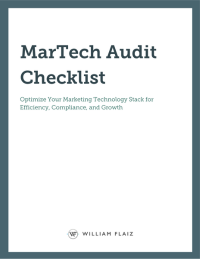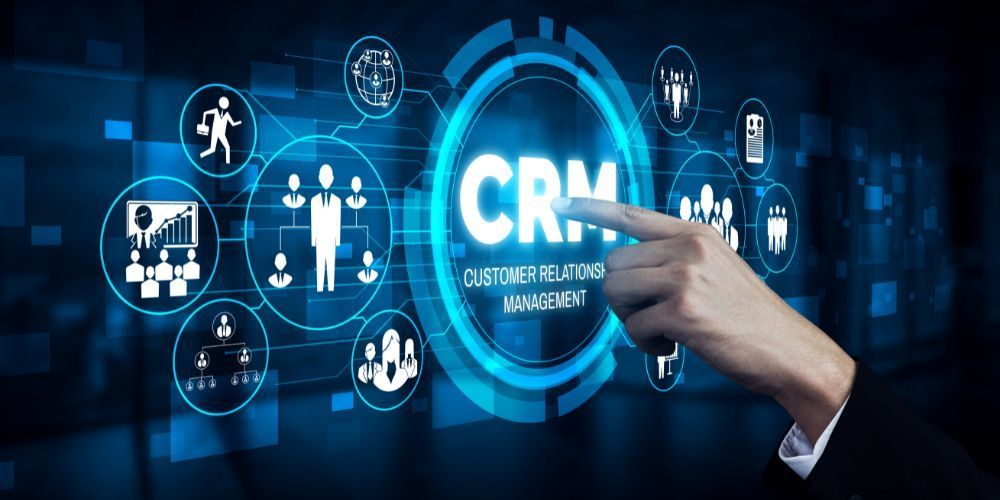The Hidden Costs of MarTech: How to Reduce Waste and Improve ROI
Businesses invest heavily in marketing technology (MarTech) solutions with the expectation of streamlining operations and improving ROI. However, as MarTech stacks grow, costs spiral out of control, and many companies find themselves overspending on tools that do not provide the expected value. According to research from Gartner, organizations utilize only 33% of the capabilities of their MarTech stacks, leading to significant budget waste.
This article explores the hidden costs associated with MarTech, presents case studies of businesses that have tackled inefficiencies, and provides actionable strategies to optimize spending without compromising performance.

Understanding the Hidden Costs of MarTech
MarTech expenses extend far beyond the initial subscription fees. Many companies underestimate the true cost of ownership, which includes integration, training, underutilized features, and overlapping functionalities. These hidden costs can erode marketing budgets, leading to inefficiencies and unnecessary financial strain.
Underutilized Tools and Feature Overload
Many businesses invest in MarTech solutions but fail to use them to their full potential. Companies often purchase sophisticated platforms like Salesforce Marketing Cloud or Adobe Marketo, only to use a fraction of the available features. As a result, they pay for capabilities they do not need.
A study by Gartner revealed that organizations frequently underuse their MarTech investments, with nearly $4 million in annual spend wasted in a company with $250 million in revenue. To address this issue, businesses should conduct regular audits of their MarTech tools to assess actual usage versus anticipated value. Evaluating utilization metrics can help companies determine whether they need an expensive enterprise-grade tool or if a simpler, more cost-effective solution would suffice.
Feature Redundancy and Tool Overlap
Another common issue is the redundancy of tools within the MarTech stack. Many organizations unknowingly invest in multiple platforms that serve similar functions, such as customer relationship management (CRM), email automation, and social media scheduling.
For example, a company might be using HubSpot, Marketo, and Mailchimp for marketing automation, with significant feature overlap between these platforms. The cost of maintaining multiple tools for similar purposes can quickly add up. To optimize spending, businesses should conduct a side-by-side comparison of their tools and consolidate where possible.
Hidden Subscription Fees and Unused Licenses
A frequent budget drain in MarTech spending is the cost of unused licenses and unnecessary premium features. Many organizations sign up for platforms with extensive user licenses but fail to monitor active engagement. As a result, they end up paying for accounts that are not actively used.
A good practice is to regularly review user activity and adjust subscription plans accordingly. If only 40 employees actively use a CRM, but the company is paying for 100 seats, downsizing the license count can lead to substantial savings.
Integration and Implementation Costs
While purchasing a new MarTech tool may seem like a straightforward expense, the true cost often includes implementation and integration fees. Many platforms require extensive setup, third-party consulting, and internal training, all of which add to the total cost of ownership.
For example, Citron Hygiene faced operational inefficiencies due to managing multiple marketing platforms, including Pardot, DotDigital, and three separate Salesforce instances. The company decided to consolidate its MarTech stack into HubSpot Enterprise, a move that significantly reduced costs and improved efficiency. By eliminating redundant tools and simplifying their marketing workflows, Citron Hygiene not only saved money but also gained better data clarity and enhanced marketing capabilities.
Your Martech Optimization Starts Here
Streamline systems, improve data flow, and increase ROI with this expert-backed checklist.
How to Audit Your MarTech Stack and Identify Budget Waste
To control MarTech expenses, businesses need to implement a structured audit process. Identifying budget waste requires a clear understanding of what tools are in use, how they contribute to business goals, and where consolidation is possible.
Step 1: Catalog All MarTech Expenses
The first step in a MarTech audit is to create a comprehensive list of all marketing technology subscriptions, licenses, and associated costs. This includes not only the direct costs of each tool but also any additional fees for support, integrations, and training.
Step 2: Analyze Usage and Performance
Log into each platform and analyze usage metrics. Determine how frequently teams interact with each tool and which features are actively used. If a tool is rarely accessed or only used for basic functions, consider whether a lower-cost alternative would suffice.
Step 3: Identify Redundancies and Consolidate Tools
Conduct a comparison of tools that serve similar functions and assess whether they can be consolidated. If two platforms provide overlapping capabilities, it may be more cost-effective to use one comprehensive solution instead of maintaining multiple subscriptions.
A prime example of this is Isos Technology, which struggled with a disjointed MarTech stack that resulted in inefficient marketing and stagnant revenue growth. The company partnered with Orange Marketing to consolidate its sales and marketing technologies. As a result, Isos Technology saw a 30% increase in closed deals and a 19% rise in marketing-qualified leads (MQLs), demonstrating the power of simplifying a MarTech stack.
Step 4: Evaluate the Total Cost of Ownership (TCO)
When considering MarTech investments, it is essential to factor in the total cost of ownership. This includes subscription fees, onboarding and training expenses, integration requirements, and long-term maintenance costs. A tool that appears affordable on the surface may carry hidden expenses that make it more costly over time.
Step 5: Reallocate Budget to High-Impact Tools
Once unnecessary tools are eliminated, reallocate the budget to high-ROI platforms that directly contribute to marketing performance. Prioritize solutions that enhance automation, improve customer engagement, and provide actionable insights.
Smart Budgeting: How to Save Money While Maintaining Performance
- Negotiate vendor contracts to secure lower pricing or customized plans that align with business needs.
- Leverage open-source and freemium tools as alternatives to expensive enterprise solutions.
- Adopt no-code and AI-powered platforms to reduce reliance on developers and streamline automation.
- Run pilot programs before committing to long-term contracts to ensure tool effectiveness.
Conclusion
The hidden costs of MarTech can quietly erode a company’s marketing budget if left unchecked. From underutilized tools and redundant platforms to excessive licensing fees and costly integrations, there are many factors that contribute to wasted spending. By regularly auditing the MarTech stack, consolidating tools, and focusing on solutions that deliver measurable value, businesses can optimize their marketing technology investments.
MarTech should empower marketing teams, not drain budgets. By taking a proactive approach to budget management and technology selection, organizations can maintain a lean, effective, and cost-efficient MarTech stack that supports long-term growth.
Want to take control of your MarTech spending? Download our MarTech Audit Checklist today and start optimizing your stack for better efficiency and cost savings.











